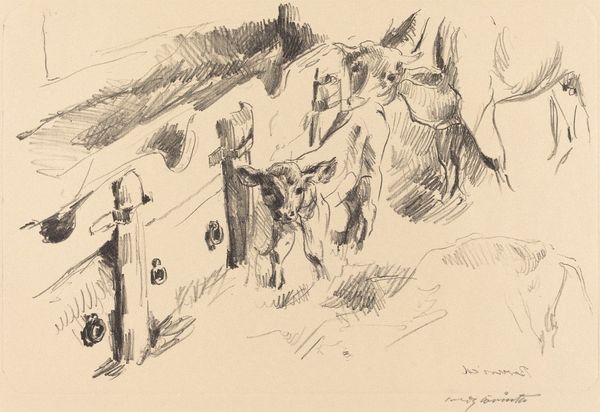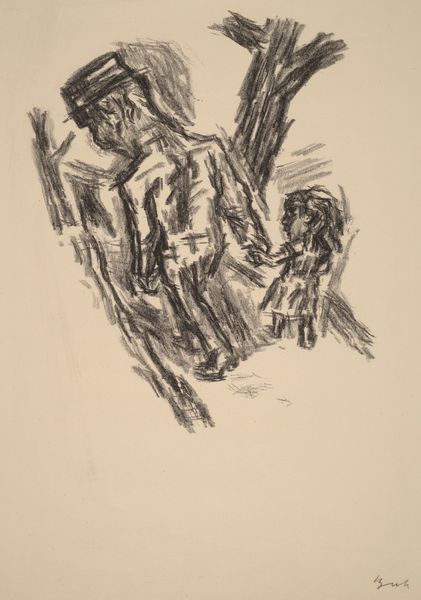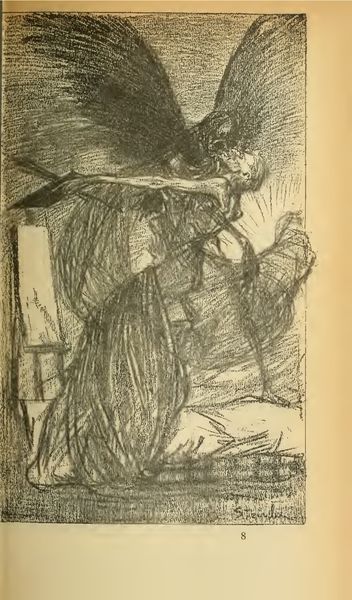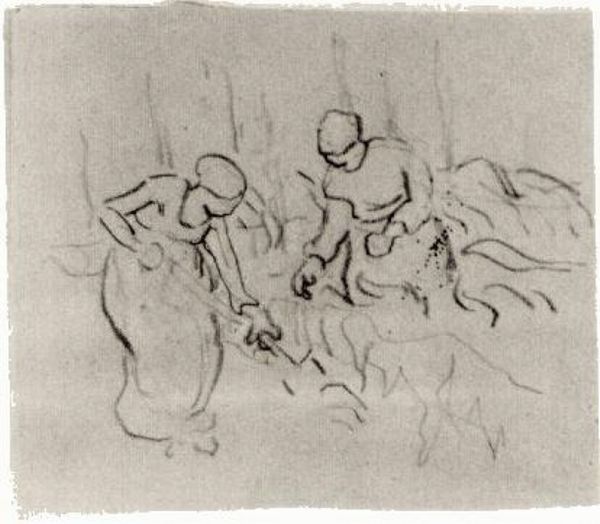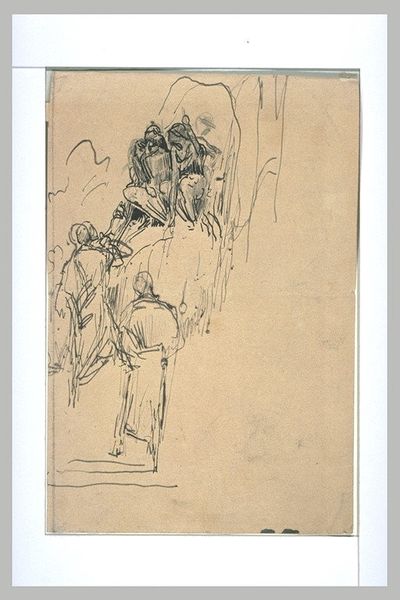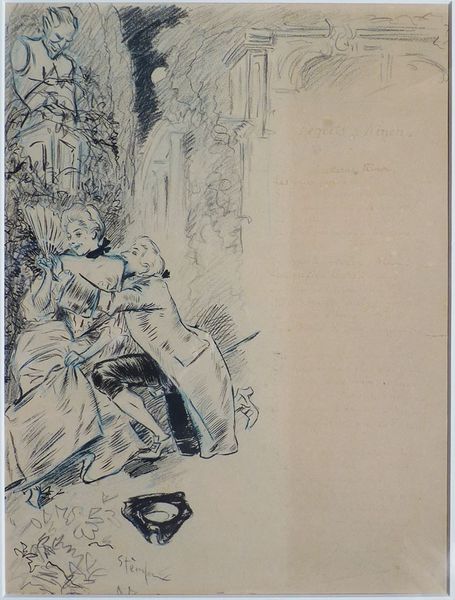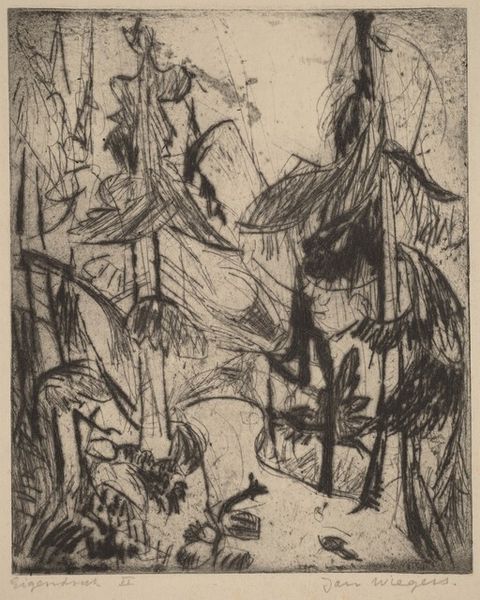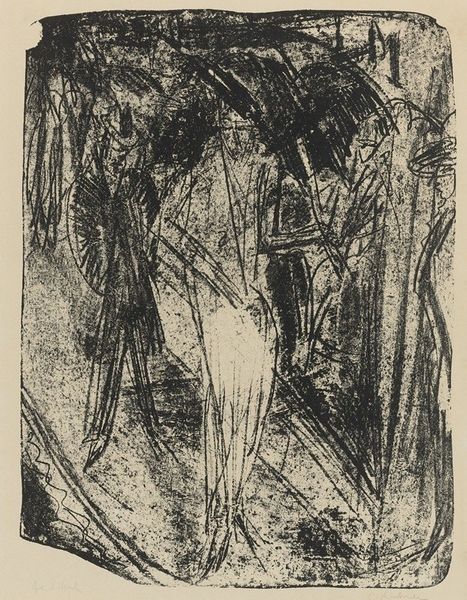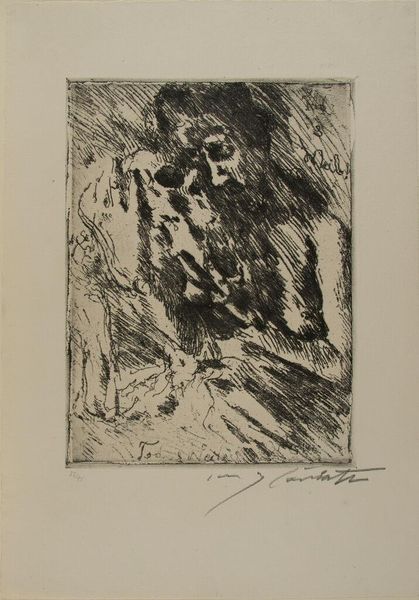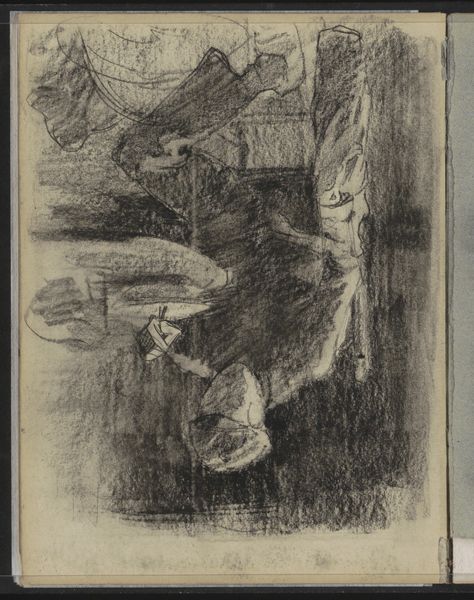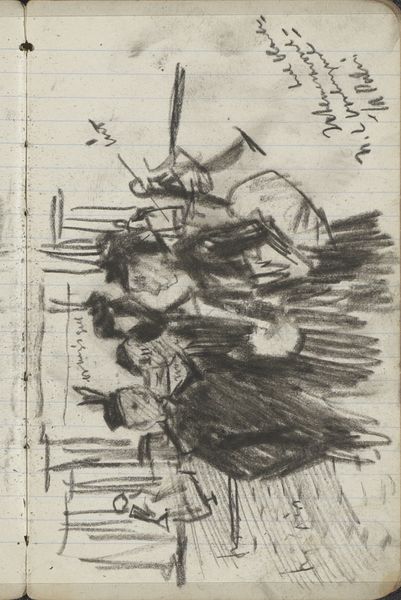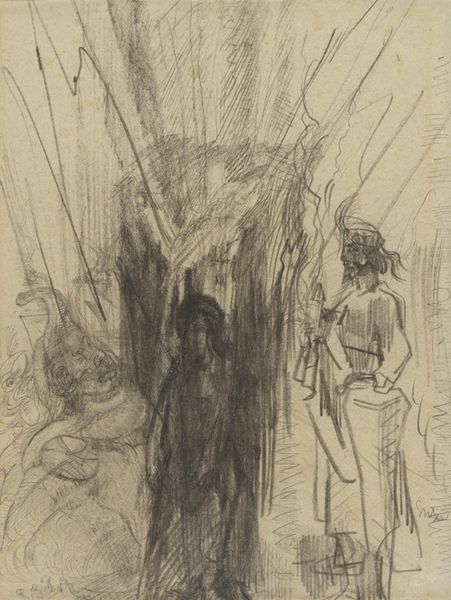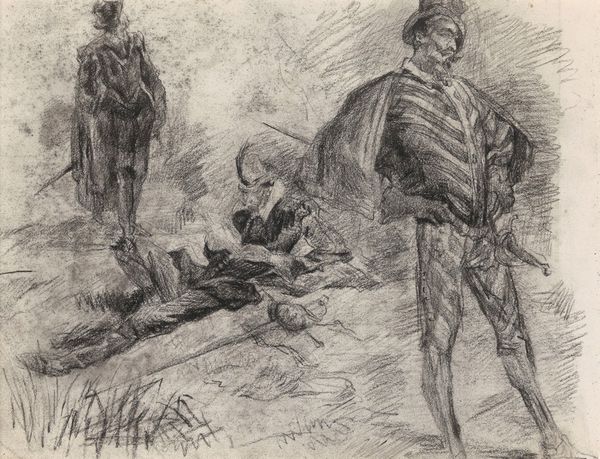
drawing, pencil, charcoal
#
portrait
#
drawing
#
narrative-art
#
pencil
#
charcoal
#
realism
Copyright: Public domain
Curator: Let's turn our attention to "Au Creneau," a 1917 drawing by Théophile Alexandre Steinlen, rendered in pencil and charcoal. What is your initial impression? Editor: Stark. Utilitarian. Bleak. The artist's hand seems frantic, or perhaps impatient—the hurried charcoal lines giving a chilling mood, one of somber determination. Curator: Indeed. Steinlen, known for his social realism, especially his depictions of Parisian street life, here turns his gaze toward the First World War. “Au Creneau,” which translates to "In the Trench", presents us with a visceral depiction of soldiers in the trenches. The recurring motifs of military trench warfare reveal the common symbolism with a literal hole that one must climb out of to risk their lives and mortality. Editor: Absolutely. Consider the composition: the claustrophobic arrangement of figures—their weary stances, shadowed faces almost dissolving into the background, it masterfully conveys the dehumanizing environment. We even see hints of expressionistic handling. Do you feel it evokes war like his famous posters? Curator: I'd agree to an extent. Though it is far removed from Steinlen’s famous vibrant Belle Époque posters of cats, it's impossible to view them separately from one another. There's a melancholy in the charcoal drawing which permeates to and from the posters. I suppose the most telling message it conveys is the symbol of remembrance. This speaks volumes about his shift as an artist at the time. It's the somber aftertaste of those posters with a more brutal honesty that encapsulates the true feeling of war at the time. Editor: Yes, precisely. And technically, notice how Steinlen employs hatching and cross-hatching to build form, how light seems trapped, suffocated within the darkness, which reflects in his work. Curator: Exactly. War isn’t portrayed with romanticism or patriotic grandstanding, but as a grim, material reality. By the end of the first World War, one of the enduring memories has been of modern battle fought not on some noble field of endeavor, but deep within muddy trenches. It encapsulates the feeling of those at the time with stark and poignant accuracy. Editor: A deeply affecting piece and another compelling reminder of the horrors of conflict.
Comments
No comments
Be the first to comment and join the conversation on the ultimate creative platform.
